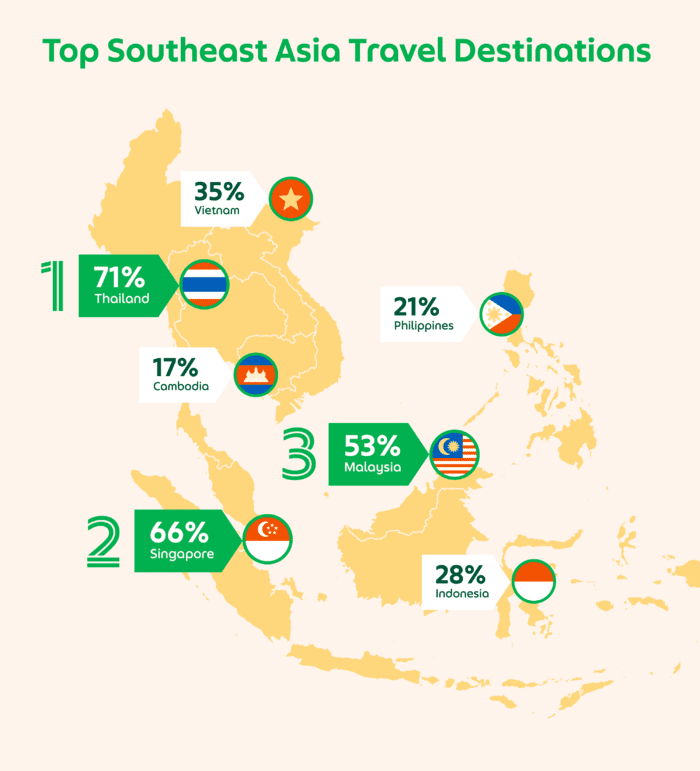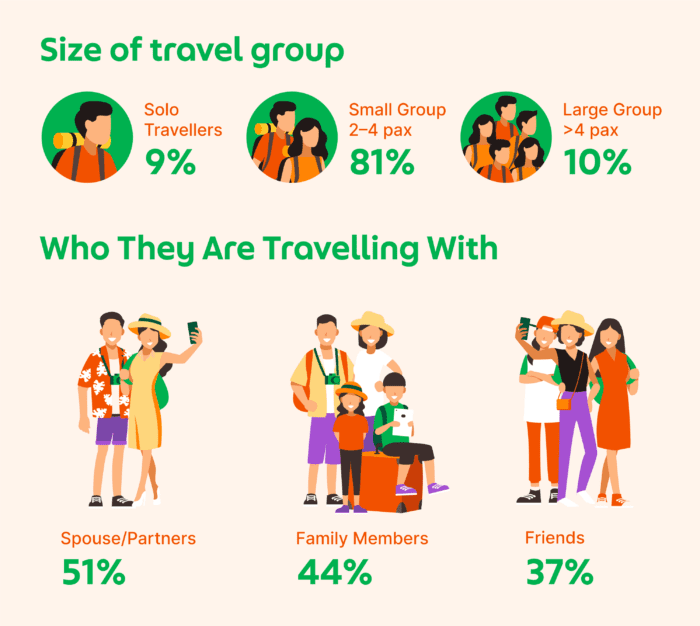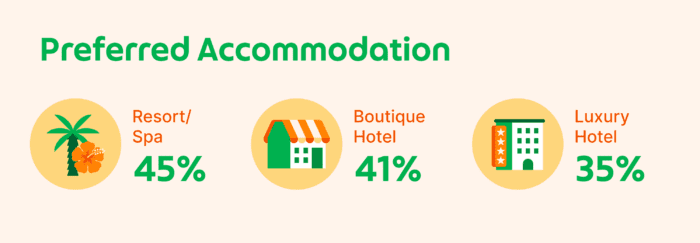We’re seeing more Chinese tourists booking Grab rides in Thailand
Travel is picking up in some of Southeast Asia’s popular tourist destinations. Thailand, a perennial favourite, is seeing increased activity from foreign users, led by the return of Chinese tourists.
Grab data shows the number of rides in Thailand taken by Chinese users grew 38 per cent in the second quarter this year, compared with the previous quarter.
Thailand is the most popular Southeast Asia destination for Chinese tourists.
Over 12 million foreign tourists have visited Thailand in the first half of this year, surpassing the 11.2 million in the whole of 2022, according to data published by the Ministry of Tourism and Sports. The number of Chinese tourists, in particular, had grown significantly, reaching over 1.4 million people in the first six months.
These findings echo a recent survey commissioned by Grab which found that Thailand was the favourite Southeast Asia travel destination among mainland Chinese travellers. Bangkok, Phuket, Chiang Mai, Pattaya, and Koh Samui emerged as the top five destinations in Thailand.

Bangkok, Phuket, Chiang Mai, Pattaya, and Koh Samui emerged as the top five destinations in Thailand.
Everybody’s heading to the beach
As China’s borders reopen after years of pandemic-induced lockdowns, 97 per cent of Chinese tourists surveyed said that they intend to travel for leisure rather than for business, to visit relatives or seek healthcare. They are also setting aside an average of seven days for the much-needed respite.

Some 81 per cent said that they are keen to travel in smaller groups of two to four—signalling a shift away from large group experiences such as tour groups. Just 10 per cent intend to travel in bigger groups of more than four while 9 per cent plan to go solo.
Their ideal getaway? A break from city life. About 74 per cent of respondents are intending to head to the beach during their vacation. 63 per cent also expressed an interest in cultural destinations while 56 per cent are keen on nature-oriented activities.
Digital payments and language a priority
Language barriers, risk of scams and making local payments weighed on the minds of Chinese travellers surveyed. As such, Chinese-language friendly places and spots that accept Chinese mobile payments would help to enhance their travel experience, they said.
To cater to these needs, Grab had in August joined forces with Alipay to allow Chinese travellers to pay for Grab services with a payment method they are familiar with.
This follows a recent partnership with WeChat to integrate Grab ride-hailing services directly on the superapp. WeChat users are now able to access Grab’s ride-hailing services and pay in Chinese Yuan within the app.
Alipay and WeChat Pay are the dominant digital wallets in China and are near ubiquitous, from large cities to countryside.
Chinese tourists who are not familiar with local languages can also tap Grab’s in-app messaging feature that translates so that passengers and driver-partners can communicate with each other. The Grab app is also now available in Chinese.
Going big on holiday plans


Rising travel prices appear to be less of a concern for Chinese travellers with a majority of them planning to set aside a higher budget for their holidays.
They are allocating an average of RMB 30,000 (US$4,300) per trip, with a bulk of it going to food and accommodations. When asked about the top two types of accommodation they have in mind, 35 per cent said that they would stay in luxury hotels; 45 per cent opted for resorts while 41 per cent chose boutique hotels.
Getting around
Transport within the city is top of mind when Chinese travellers are planning for their trip. The survey revealed that apart from using ride-hailing services to commute to and from the airport and to get around the city, travellers were also relying on ride-hailing apps for inter-city travel.
That’s why we have been working on features to help travellers plan ahead. When the Grab app is opened by users outside of Southeast Asia, they’ll now be prompted to select their destination city and use the app as if they were in that place.
(Read more: Grab’s new traveller features target the upcoming tourist boom)
This will allow them to check out Grab services present in the city, check routes they plan to take and research places of interest or food outlets near the hotel. These locations can also be saved as preferred points so they can select these easily when they arrive.
3 Media Close,
Singapore 138498